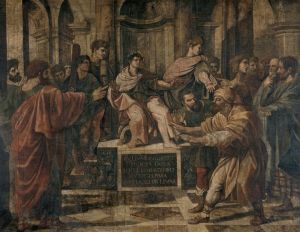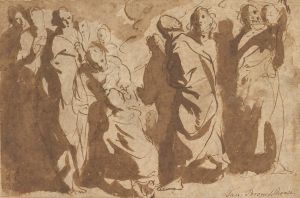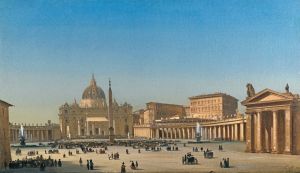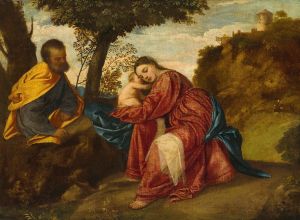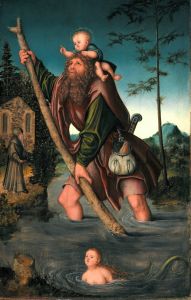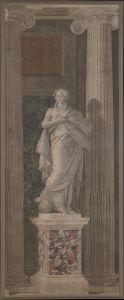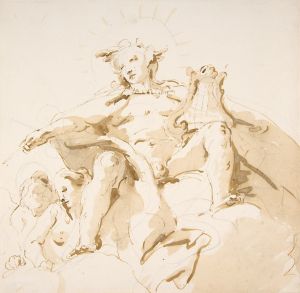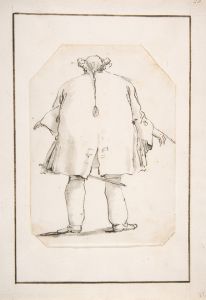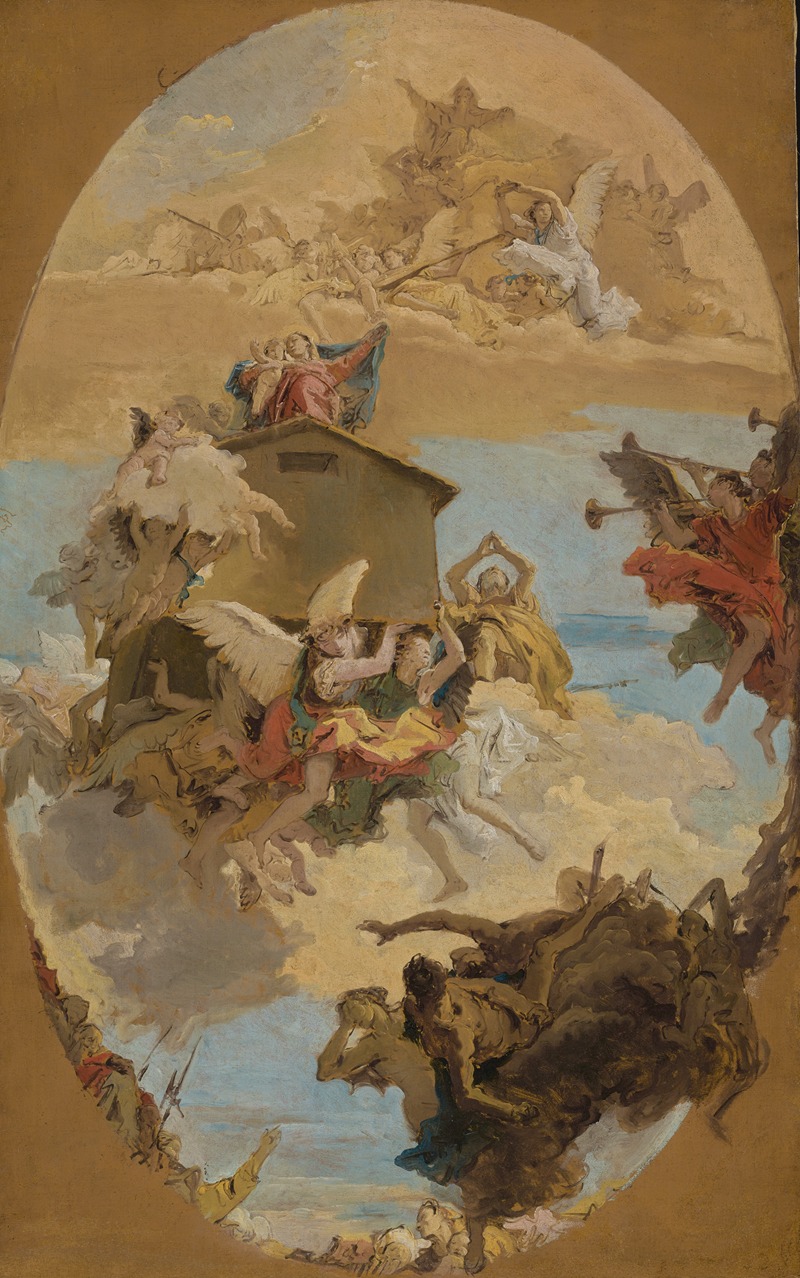
The Miracle of the Holy House of Loreto
A hand-painted replica of Giovanni Battista Tiepolo’s masterpiece The Miracle of the Holy House of Loreto, meticulously crafted by professional artists to capture the true essence of the original. Each piece is created with museum-quality canvas and rare mineral pigments, carefully painted by experienced artists with delicate brushstrokes and rich, layered colors to perfectly recreate the texture of the original artwork. Unlike machine-printed reproductions, this hand-painted version brings the painting to life, infused with the artist’s emotions and skill in every stroke. Whether for personal collection or home decoration, it instantly elevates the artistic atmosphere of any space.
Giovanni Battista Tiepolo's The Miracle of the Holy House of Loreto is a significant work by the renowned Venetian painter, known for his mastery of the Rococo style and his ability to depict dramatic religious and historical scenes. This painting illustrates the miraculous transportation of the Holy House of the Virgin Mary, a legend deeply rooted in Catholic tradition. According to the story, the Holy House, believed to be the home where the Virgin Mary was born and where the Annunciation occurred, was miraculously transported by angels from Nazareth to Loreto, Italy, in the late 13th century to protect it from destruction during the Crusades.
The painting is part of a series of works by Tiepolo that explore religious themes with a sense of grandeur and theatricality. Tiepolo's use of light, color, and dynamic composition brings the miraculous event to life, emphasizing the divine intervention central to the legend. The figures in the painting are rendered with a sense of movement and emotion, characteristic of Tiepolo's style, which often combines spiritual intensity with a sense of human drama.
This work reflects Tiepolo's ability to blend the sacred and the earthly, as he often incorporated architectural elements and naturalistic details into his compositions. The painting likely served as an altarpiece or a devotional artwork, intended to inspire faith and devotion among its viewers. Tiepolo's skill in creating a sense of depth and space, along with his delicate handling of color, enhances the spiritual impact of the scene.
While the exact date of the painting's creation is not definitively documented, it is consistent with Tiepolo's mature period, during which he produced numerous works for churches and private patrons across Italy and beyond. The painting is an example of Tiepolo's ability to adapt his artistic vision to the needs of his patrons while maintaining his distinctive style.
Today, The Miracle of the Holy House of Loreto is recognized as an important example of Tiepolo's religious art. It reflects the broader cultural and spiritual context of 18th-century Catholic Europe, where such works played a vital role in visualizing and reinforcing religious narratives. Further details about the painting's current location or provenance are not readily available in public records.





